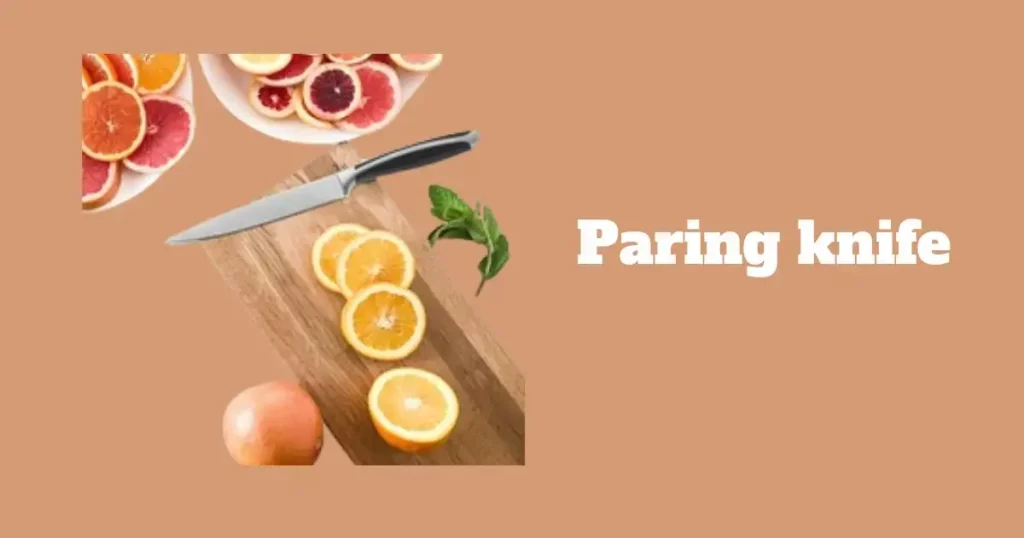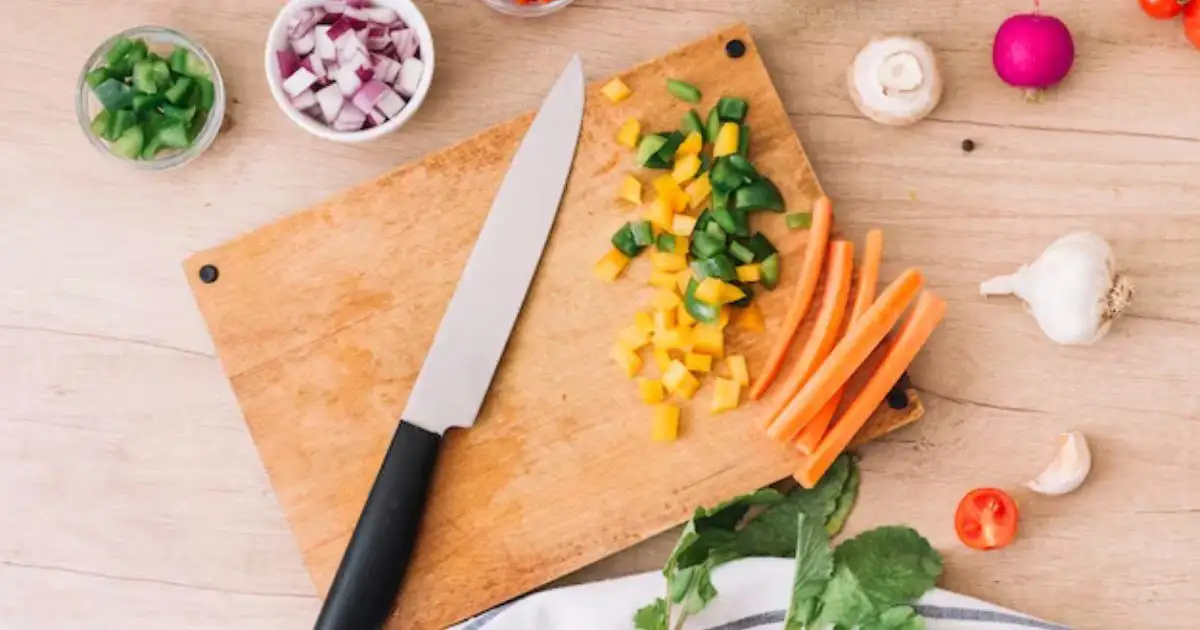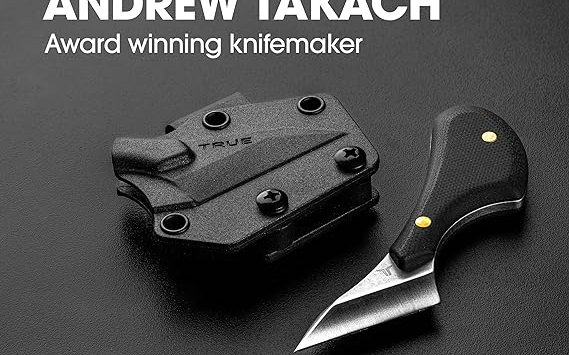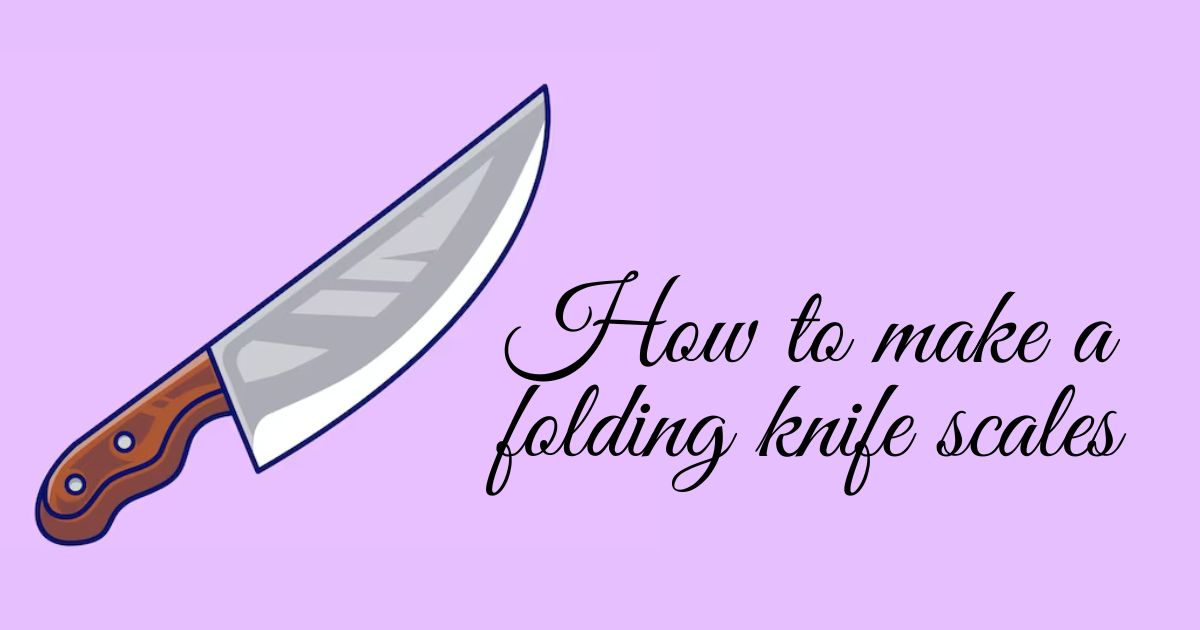Unveiling the Culinary Wonders: What is a Paring Knife Used For?”
Table of Contents
ToggleIntroduction:
In the bustling realm of the culinary arts, where precision and expertise are paramount, every tool in the kitchen holds its unique significance. Among the array of knives that grace the chef’s toolkit, the paring knife emerges as a petite powerhouse, often underestimated but crucial for various delicate tasks. In this exploration, we embark on a journey to uncover the mysteries of the paring knife, delving into its definition, characteristics, and the myriad of culinary tasks it accomplishes.
As we embark on this exploration, let’s unravel the layers of the paring knife, discovering not just its physical attributes but the culinary magic it unfurls with every precise cut. Join us in decoding the secrets of this humble yet indispensable kitchen companion.
What is a paring knife?
A paring knife is a small, precision-oriented kitchen knife characterized by its compact size, narrow blade, and pointed tip. Its smaller size enables chefs to navigate tight spaces and execute intricate manoeuvres that might be challenging with larger knives.
The paring knife’s versatility extends beyond simple peeling; it is often employed for tasks like deveining shrimp, removing seeds, and creating decorative garnishes.
What are the characteristics of a paring knife?
Size and Shape
- Compact Dimensions:
- A paring knife is characterized by its modest size, typically featuring a blade ranging from 2 to 4 inches. This compact design contributes to the knife’s agility and ease of use for delicate tasks.
- The small size allows for precise control, making it well-suited for intricate cutting and peeling tasks without unnecessary bulk.
- Narrow Profile:
- The blade of a paring knife is narrow and slender, emphasizing precision over broad strokes. This design facilitates the knife’s ability to navigate tight spaces and execute detailed cuts with minimal disruption.
- The narrow profile also aids in reducing friction during slicing, ensuring smooth and controlled movements.
Blade Composition
- Precision-Honed Edge:
- The blade of a paring knife is meticulously sharpened to achieve a fine and precise edge. This characteristic is essential for tasks that require detailed and accurate cutting, such as peeling fruits or deveining shrimp.
- The sharp edge ensures minimal effort is required, allowing the knife to glide through ingredients effortlessly.
- Pointed Tip:
- The pointed tip is instrumental in tasks that demand accuracy, making it an ideal tool for creating decorative garnishes or intricate patterns.
Handle Design
- Ergonomic Grip:
- Paring knives are equipped with handles designed for ergonomic comfort during prolonged use.
- Lightweight Construction:
- Paring knives are intentionally lightweight, contributing to their nimble and agile nature.
What is the anatomy of a paring knife?

Spine:
- The spine is the top, non-cutting edge of the blade. In a paring knife, the spine may be straight or slightly curved. The spine contributes to the overall stability and balance of the knife. It also provides a surface for the thumb to rest against, aiding in control during cutting.
Bolster (Optional):
- Some paring knives may have a bolster, a thick junction between the blade and the handle. The bolster adds weight and balance to the knife, and it also provides a safeguard for the hand.
- Tang:
Handle:
- The handle is the grip used to hold the knife. Paring knife handles are designed for ergonomic comfort, allowing for precise control during detailed cutting tasks.
What is the versatility of paring knives?
Here are some key aspects of the versatility of paring knives:
Precision Cutting:
- Peeling: Paring knives excel at peeling fruits and vegetables, thanks to their sharp and pointed blades. The precision offered by a paring knife allows for minimal waste while removing only the outermost layer of the skin.
- Trimming: Paring knives are ideal for trimming excess fat or unwanted portions from meat, ensuring a clean and precise cut without compromising the quality of the ingredients.
Small-Detail Work:
- Creating Garnishes: Paring knives are often employed to create intricate garnishes and decorations for dishes. Whether it’s carving fruit into decorative shapes or crafting vegetable garnishes, the fine control provided by a paring knife is crucial for achieving aesthetically pleasing results.
- Removing Seeds: The pointed tip of a paring knife is excellent for removing seeds from fruits and vegetables, offering a level of precision that may be challenging with larger knives.
Deboning:
- While not as robust as dedicated boning knives, paring knives can be used for small-scale deboning tasks. They are particularly useful for deboning poultry or trimming excess fat from cuts of meat.
Other Culinary Uses:
- Score and Incise: Paring knives are adept at scoring the surface of bread or pastry dough before baking, allowing for controlled expansion during the baking process.
- Coring: The pointed tip can be used for coring fruits like apples or pears, facilitating the removal of seeds and cores with precision.
- Opening Packages: The small size and sharpness of a paring knife make it a convenient tool for opening food packaging or trimming excess material.
Utility in Limited Spaces:
- The compact size of paring knives makes them highly manoeuvrable, allowing chefs to navigate confined spaces with ease. This makes them especially useful when working with smaller ingredients or in situations where a larger knife might be impractical.
Complement to Larger Knives:
- Paring knives complement larger knives, such as chef’s knives, by handling tasks that require a more delicate touch. While larger knives excel at chopping and slicing, paring knives are designed for fine, detailed work.
Paring Knife vs. Other Kitchen Knives
Comparison with Chef’s Knife
Size and length:
- Paring Knife: Generally smaller, with a blade ranging from 2 to 4 inches.
- Chef’s Knife: Larger, with a blade typically ranging from 6 to 10 inches.
Handling Different Ingredients:
- Paring Knife: Ideal for smaller fruits, vegetables, and delicate tasks requiring finesse.
- Chef’s Knife: well-suited for larger vegetables, meats, and tasks that involve more substantial cutting.
Versatility:
- Paring Knife: specialized for detailed work, complementing the chef’s knife for intricate tasks.
- Chef’s Knife: A multipurpose workhorse capable of handling various cutting and chopping needs.
Distinctions from Utility Knife
Blade shape and size:
- Paring Knife: Typically has a narrow, pointed blade.
- Utility Knife: Features a slightly longer blade than a paring knife, often with a serrated or straight edge.
Primary Uses:
- Paring Knife: specialized for intricate cutting, peeling, and shaping tasks.
- . Utility Knife: Versatile, suitable for general cutting, slicing, and handling items of moderate size.
Handling Different Ingredients:
- Paring Knife: Geared toward smaller fruits, vegetables, and tasks requiring precision.
- Utility Knife: More versatile than a paring knife, handling a broader range of ingredients with a moderate size.
Edge Type:
- Paring Knife: Typically features a fine, straight edge.
- Utility Knife: This may have a straight or serrated edge, offering flexibility for various cutting needs.
What are the tips for using a paring knife safely?
Using a paring knife safely is crucial to preventing accidents and ensuring precision in your kitchen tasks. Here are some tips for using a paring knife safely:
- Proper Grip:
- Hold the knife with a firm but comfortable grip, ensuring your fingers are positioned away from the blade.
- Use a pinch grip, where the thumb and index finger pinch the blade near the bolster, providing better control.
- Stable Cutting Surface:
- Place a non-slip cutting board on a stable surface to prevent slipping.
- Ensure the cutting board is secured to the countertop to avoid accidental movement during use.
- Sharp Blade:
- Keep the blade sharp to reduce the risk of slips and ensure clean cuts.
- Regularly sharpen the paring knife using a honing rod or sharpening stone.
- Appropriate Cutting Technique:
- Use a controlled rocking or slicing motion when cutting.
- Avoid applying excessive force, letting the sharpness of the blade do the work.
- Finger Placement:
- Curl your non-dominant hand’s fingers inward, using a claw grip to hold the food securely.
- Keep your fingertips away from the path of the blade to prevent accidental cuts.
- Mindful of the Blade:
- Be aware of the position of the blade at all times.
- Avoid reaching for falling objects to prevent accidental cuts.
- Use the right knife for the task:
- Choose the appropriate knife for the specific task. While paring knives are versatile, using the right tool enhances safety.
- Reserve paring knives for precision tasks like peeling, trimming, and detailed cutting.
- Steady Cutting Pace:
- Maintain a steady and controlled cutting pace.
- Rushing increases the risk of losing control and may lead to accidents.
- Cleaning Safely:
- Handwash the paring knife with mild soap and warm water, avoiding submersion in water for extended periods.
- Dry the knife immediately after washing to prevent accidents while handling it later.
- Store Safely:
- When not in use, store the paring knife in a designated knife block or magnetic strip to prevent accidents when reaching for other items.
- Avoid storing knives in drawers without proper protection to prevent injuries while retrieving them.
- Teach proper knife skills:
- If working with others in the kitchen, especially children, teach proper knife skills and safety practices.
- Encourage a culture of mindfulness and communication when sharp objects are in use.
- Wear cut-resistant gloves (optional):
- Consider using cut-resistant gloves, especially if you are learning knife skills or handling slippery ingredients.
- By incorporating these safety tips into your kitchen routine, you can ensure a safer and more enjoyable experience when using a paring knife. Always prioritize caution, mindfulness, and proper techniques to prevent accidents and injuries.
How Do We Select the Right Paring Knife?
Here’s a guide on how to choose the perfect paring knife:
Blade Type:
- Straight Edge: Ideal for precise, clean cuts in tasks like peeling and trimming.
- Serrated Edge: Suitable for cutting through softer fruits and vegetables with tough skins, such as tomatoes.
Blade Length:
- Consider the task: Choose a blade length based on the tasks you commonly perform. A 3- to 4-inch blade is versatile for most general uses, but a shorter blade may offer more precision.
Blade Shape:
- Pointed Tip: Ideal for intricate tasks like peeling and detailed cutting.
- Bird’s Beak (Curved Tip): Designed for tasks like shaping vegetables but may not be as versatile for general use.
Tang:
- Full Tang: Some users prefer a paring knife with a full tang (the blade extends into the handle) for added stability and strength.
Balance:
- Weight Distribution: Balance is crucial for control. Hold the knife to see if it feels balanced—neither handle-heavy nor blade-heavy.
Brand and reputation:
- Reputable Brands: Consider purchasing from well-known brands with a reputation for producing high-quality knives. Research customer reviews for insights into the knife’s performance and durability.
Maintenance:
- Ease of Sharpening: Check how easy it is to sharpen the knife. A paring knife that is easy to maintain ensures long-lasting performance.
- Dishwasher Compatibility: While handwashing is recommended, if you prefer a dishwasher-safe option, ensure the knife can withstand dishwasher use without damage.
Try before you buy:
- Visit a Store: If possible, visit a kitchen supply store to handle different paring knives. This allows you to feel the weight, balance, and grip before making a decision.
Warranty:
- Check the Warranty: Ensure the paring knife comes with a warranty, reflecting the manufacturer’s confidence in its quality. A warranty can also provide peace of mind regarding potential defects.
How can we maintain and care for pairing knives?
- Always wash the paring knife with warm water after using it.
- Ensure thorough drying, including in the area where the blade meets the handle.
- Use a controlled rocking or slicing motion when cutting to reduce the risk of chipping or breaking the blade.
- Avoid using excessive force, letting the sharpness of the blade do the work.
- Regularly hone the blade using a honing rod or sharpening steel to maintain its sharpness.
- Follow the manufacturer’s guidelines for the appropriate sharpening method and frequency.
- Store paring knives in a knife block, magnetic strip, or on a wall-mounted magnetic holder.
- Use blade guards if storing knives in a drawer to prevent damage and ensure safety when reaching for other items.
- For carbon steel knives, consider applying a thin layer of food-safe mineral oil to the blade to prevent rust.
- Wipe off excess oil before using the knife.
conclusion
In conclusion, a paring knife, though small in size, plays a significant role in the kitchen, offering precision and versatility for various tasks. Before selecting the paring knife, understand its characteristics that improve their culinary experience,It is not just a kitchen tool it also allowed the creation of intricate and beautiful dishes with ease and safety.
FAQ
What is the difference between a paring knife and a chef knife?
- Paring knives are smaller with a narrow blade and pointed tip, designed for detailed tasks. A chef’s knife is larger and designed for chopping, slicing, and dicing
Can we use a paring knife for cutting larger items?
- While a paring knife is designed for smaller tasks, it can be used for cutting larger items with caution.
Is a paring knife the best choice for cutting meat?
- Paring knives are not the best choice for cutting through bones or tougher cuts of meat. They are suitable for trimming fat and handling smaller cuts of meat.
How often should I hone and sharpen my paring knife?
- Honing can be done regularly, even before each use, to maintain the edge.
- What should I look for when buying a paring knife?
Consider factors like blade material, type, length, handle design, balance, and personal preferences. Choose a paring knife that feels comfortable in your hand and suits your intended tasks in the kitchen.




